Tadevush Kasciushka (Thaddeus Kosciuszko)
1746-1817
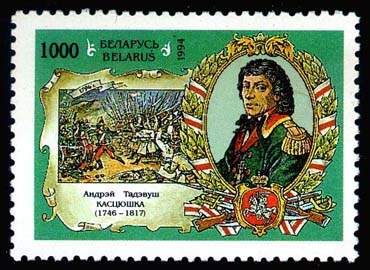 A cadet of the Military Academy in Warsaw, an outstanding, educated in
France engineer - strategist, a hero of the U.S. War of Independence, the
commander-in-chief of the only Polish uprising to be named after its leader - Kosciusko
Rising. Teddy Kosciusko is the best example of the international hero fighting for liberty
of the oppressed nations in a brave, acceptable way.
A cadet of the Military Academy in Warsaw, an outstanding, educated in
France engineer - strategist, a hero of the U.S. War of Independence, the
commander-in-chief of the only Polish uprising to be named after its leader - Kosciusko
Rising. Teddy Kosciusko is the best example of the international hero fighting for liberty
of the oppressed nations in a brave, acceptable way.
Thaddeus Kosciusko came from a family of middle Belarusian gentry, born in February
1746 in Kosava, near Brest, in Western Belarus. In
September 2003 American embassy in Belarus has signed a grant to restore a house of his
birth in Kosava. He attended the Cadet School and in 1770 left for Paris to continue
his studies. There, he became acquainted with the progressive ideology of the French
Enlightenment. Poland was undergoing the first partition of 1772 when Kosciusko was in
France. In 1776 at the age of 20 Kosciusko left for America and took part in the fight
for the freedom of the North American colonies. He soon became General George Washington's
chief engineer and strategist, contributing to the decisive American victory at the Battle
of Saratoga in 1777. The following year he directed the construction of several =
fortifications for the Continental Army. In 1783 he was granted United States citizenship,
a pension, estates, and the rank of brigadier general.
A true son of liberty and democracy, Kosciusko was a close friend of Thomas Jefferson,
the third president of the United States; father of the U.S. Army Corps of Engineers; and
designer of the elaborate fortifications of the U.S. Army Military Academy at West Point,
New York. A good portion of his life was spent in fighting for freedom and independence of
his homeland. During Soviet times, his achievements on behalf of Belarus as well as
his contributions in the U.S. revolutionary war were forgotten and neglected. The United
States has honored Kosciusko in many ways, including the placement of his statue in
La Fayette park across the street from the White House in Washington.
Back in Poland in 1784, Kosciusko helped organize the Polish Army which was enlarged
by provisions contained in the statutes of the Four-Year Seym and participated in the 1792
war against Russia. Following the second partition of Poland, by Russia and Prussia, an
armed insurrection broke out in Poland in 1794 Kosciusko was appointed commander-in-chief
of the armed forces. Kosciusko abolished serfdom, reduced the corvee - or unpaid
labor for the lord - and freed peasants who served in the army from this duty. From today's
nationalist position it seems he was betraying Belarusian nation. Nothing like that! He
fought for multi-national Rzeczpospolita (Commonwealth of Poland and Lithuania) and there
was enough space there for many nations. After several victorious battles in October,
1794, the Polish forces suffered a defeat at Maciejowice. The uprising was overcome by
combined Russian and Prussian forces. He was wounded in battle, and sent to St. Petersburg
in a cage all the way from Poland. Chief of Russian forces Alexander Suvorov has ordered
that the guard would pee on Kosciuszko all the way To St. Petersburg. There he was
imprisoned in the Fortress of Petropavlovsk for two years. On being released from prison
in 1796, he continued to fight for a free Poland on the diplomatic front from his refuge
in England, and later Switzerland, where he died in 1817. His body was brought to Poland
and laid to rest in the royal crypt at Wawel Castle in Krakow.
Kosciuszko left most of his money and some of his land to help free blacks in America.
Eventually, however, his will was contested by family members, and his wishes were never
fulfilled.
The United States showed its regard for their wartime hero by giving his name (which
they spelt without a "z") to towns in Mississippi and Texas, a county in
Indiana, and an island in Alaska.
"The effusion of friendship and my warmest toward you which not time will alter.
Your principles and dispositions were made to be honored, revered and loved. True to a
single object, the freedom and happiness of man..." - so wrote the President of the
United States Thomas Jefferson to his friend, American and Polish army general Thaddeus
Kosciusko.
December 2004: Belarusian military cadet has been expelled from
Military School in Minsk named after Alexander Suvorov for collecting signatures
under a protest against Belarusian military school being named after butcher of
Belarusian and Polish liberation movements and suggesting to rename Military
School in Minsk after Tadevush Kasciushka.
See also a
wonderful page on recent trip to Kosava by Ton Bezemer. Here are some of his
photos of restored house of Birth of Tadevush Kasciushka near Kosava, Brest
Voblasc', Belarus. An American Embassy in Belarus was helping financially to
restore the house. The pictures are reproduced with permission of Ton Bezemer. A
legendary Belarusian-born Belarusian/Polish/American/French hero Tadevush
Kasciushka (Thaddeus Kosciuszko) was born in this house near Kosava
palace
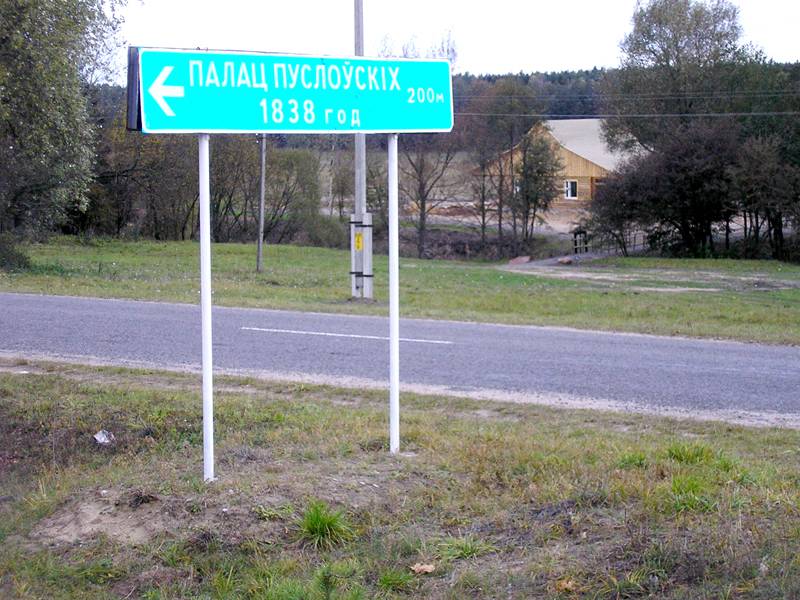
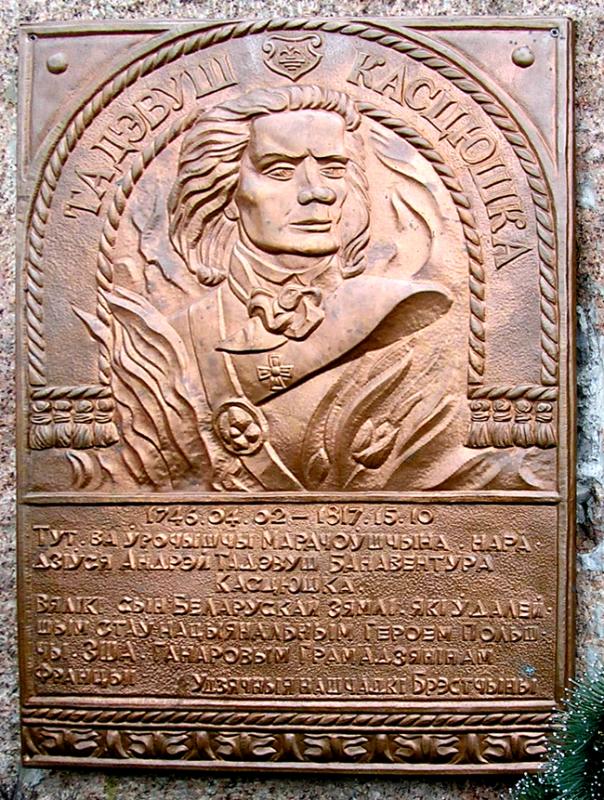
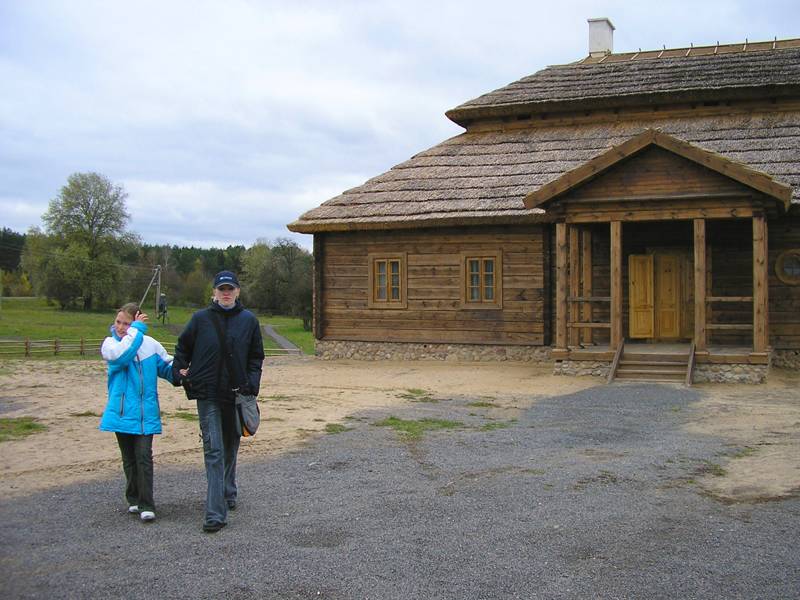
Links to Tadevush Kasciushka:
 Tadevush Kastsyushka at ABM
Tadevush Kastsyushka at ABM
 Thaddeusz
Kosciusco National Memorial in Philadelphia, PA, also here in US history pages.
Thaddeusz
Kosciusco National Memorial in Philadelphia, PA, also here in US history pages.
 Kasciushka bio on Catholic
Encyclopedia (Birthplace is shown wrong).
Kasciushka bio on Catholic
Encyclopedia (Birthplace is shown wrong).
 Mount Kosciushko -
Australian highest mountain (2228 meters). See here it's satellite
photo.
Mount Kosciushko -
Australian highest mountain (2228 meters). See here it's satellite
photo.
 Kosciuszko Bridge
in New York
Kosciuszko Bridge
in New York
 WWII Royal Air Force Squadron No. 303 (Polish) "Kosciuszko" page
WWII Royal Air Force Squadron No. 303 (Polish) "Kosciuszko" page
 Kosciuszko,
Texas
Kosciuszko,
Texas
 Kosciuszko,
Mississippi
Kosciuszko,
Mississippi
Other military commanders of 1794 anti-Russian Empire uprising
in Belarus, Lithuania and Poland were:
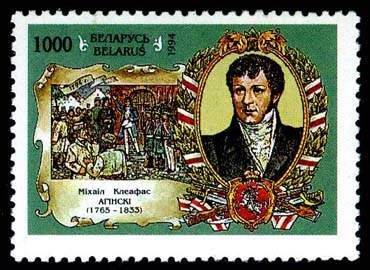 Mikhail Kleafas Ahinski
(Oginsky)
Mikhail Kleafas Ahinski
(Oginsky)
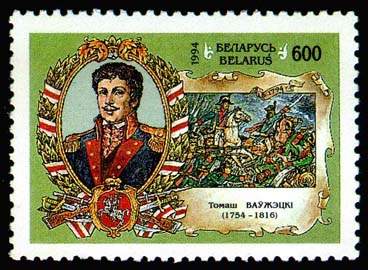 Tamash Vauzhecki
Tamash Vauzhecki
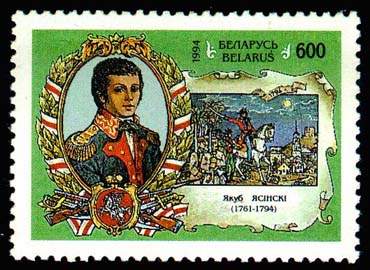 Yakub Yasinski
Yakub Yasinski
(1761-1794)
- was in charge of uprising forces in the lands of
the Grand Duchy of Lithuania. He had organized a government Lithuanian High
Council, which managed to last only several months and was disbanded by
Russian Army. Yakub Yasinski died defending Belarusian independence when he was
33 years old.
See also this Yasinski
story at Svaboda.org
Other Relevant Pages of the Virtual Guide to Belarus
 Belarusian Castles and
Knighthood
Belarusian Castles and
Knighthood
 Historic Belarusian Battles
Historic Belarusian Battles
 Belarusian
Statehood
Belarusian
Statehood
 History
of Belarus
History
of Belarus
 The Belarusian Cities guide is a part of the Virtual Guide to Belarus - a
collaborative project of Belarusian scientists
abroad. VG brings you the most extensive compilation of the information about Belarus on
the Web.
The Belarusian Cities guide is a part of the Virtual Guide to Belarus - a
collaborative project of Belarusian scientists
abroad. VG brings you the most extensive compilation of the information about Belarus on
the Web.
Please send your comments to the authors of VG to
Belarus
History | Statehood | Culture | Law and Politics | Cities | Nature and Geography
| Travel
| Global
Resources | Dictionaries
| Chernobyl
| Genealogy
| Industry
| New
 A cadet of the Military Academy in Warsaw, an outstanding, educated in
France engineer - strategist, a hero of the U.S. War of Independence, the
commander-in-chief of the only Polish uprising to be named after its leader - Kosciusko
Rising. Teddy Kosciusko is the best example of the international hero fighting for liberty
of the oppressed nations in a brave, acceptable way.
A cadet of the Military Academy in Warsaw, an outstanding, educated in
France engineer - strategist, a hero of the U.S. War of Independence, the
commander-in-chief of the only Polish uprising to be named after its leader - Kosciusko
Rising. Teddy Kosciusko is the best example of the international hero fighting for liberty
of the oppressed nations in a brave, acceptable way. 


 Mikhail Kleafas Ahinski
(Oginsky)
Mikhail Kleafas Ahinski
(Oginsky) Tamash Vauzhecki
Tamash Vauzhecki Yakub Yasinski
Yakub Yasinski 